Tag Archives: dnd
Obsidian Portal Campaign of the Month April 2024: Season of Strife

Twenty years after the fall of Utugash’s kingdom, a group of adventurers sail into Celestine and into their new destiny. Villains and allies of every faction eagerly await to use the newcomers for their own purposes, while even more sinister forces lurk in the shadows… Join us in talking with GM EdgarS as we explore the Season of Strife!
First off, feel free to tell us about the person behind the GM screen. Where are you from? What do you do aside from gaming? Alter Egos? Life partners? Family? Where can we interact with you on the internet?
Heya, I’m Edgar, I’m from the Netherlands, and I’ve been playing D&D for about 15 years now since I was invited to join a campaign for the first time. I really got into Critical Role around 2018 and watching it helped elevate my gaming and give me a way bigger sense of the possibilities the medium held to tell a story beyond ‘there’s a monster in the next room of the dungeon, go hit it.’ I also started DMing in 2018 and have or are running a couple of campaigns at the same time.
Before D&D I came from the world of tabletop gaming: building, painting and playing Warhammer Fantasy and 40K mostly, which really helped me get out of my shell as a teen (you gotta play with/against other people physically present on the other side of the table after all). From there it was a hop and a skip to D&D. I’ve been lucky to have had a pretty stable and dull life. The most I have in terms of baggage is experiencing bullying in high school because, well, huge giant nerd, but it’s precisely due to things like tabletop gaming and DMing I’ve gotten over that and grew to be a version of myself I enjoy, and being way more extrovert and bringing the sorely needed levity at office meetings. But yeah aside from that, I grew up in a fairly affluent household with loving parents, went to college (studied history and international relations), and after maybe a couple of years in the wilderness got a proper job recently working for the government. I even bought my first apartment a few months ago, which gave me the opportunity to set up a purposely-built storage room for all of my D&D terrain!

As for online, I used to be more active in various places such as tabletop gaming forums, but now I mostly lurk in peace and quiet, stay in my lane, and occasionally tweet out some art or dnd pics on my twitter (no I’m not calling it X) at @DCabbagefarm. That refers to Emperor Diocletian’s cabbages by the way. I’m a historian. Hi.
Tell us about “Season of Strife” in a nutshell. How did you design the world? What was your inspiration?
So the Season of Strife was born when one of the players put out a ‘looking for group’ call on Tumblr for an online d&d campaign, and I decided to take the plunge and offered to DM, back in late 2020. Not quite knowing whether this’d end up being a massive campaign or would bleed out early I decided to use the same homebrew setting I was using for my weekly campaign, the Twilight of the Spheres (and by the way, that one’s got its own Obsidian wiki too, probably even more expansive than the Strife one), but simply designing a new area for the world like it was some kind of Warcraft expansion. Exactly how many hidden continents are there?!
After this I expanded the map further, filling it out as I went until it reached its current state of completion, with enough space for a few more fresh campaigns. Here’s the full map, and be warned it’s a big boy

The first Twilight of the Spheres campaign (2019-2022) took place in the north-eastern region of the world, Eos, dominated by the Coalition (a pretty standard late-medieval European fantasy society consisting of a union of city states) and the Kyshtar Dominion (a majority dragonborn proto-industrial semi-Babylonian hodgepodge). That quarter of the map was all that existed of the setting, with no more than vague allusions to other stuff being beyond the boundaries. The new area I added specially for the Season of Strife was far to the south of it, an island chain called the Teylu Archipelago, inhabited by the Teylu eladrin & water genasi people who mix inspiration from both Polynesian culture and aesthetic, and Scandinavian and celtic. Two of the players are Scandinavian so that’s how that got included into the mix, plus the traditional celtic influences of the Feywild re: the eladrin. As a historian I like to draw heavily on history as inspiration for my worldbuilding, and regions in my setting often have some kind of ethnic or socio-political conflict. In this case it’s the colonial settlers who arrived from the Coalition and Kyshtar Dominion (collectively called ‘the Elyzians’) in the wake of a devastating flood that hit the Archipelago, and whose presence is pushing the Teylu to the margins. This conflict operates as a backdrop to everything going on in the campaign and it’s been very fortuitous that the players themselves chose to have a party consisting of two Elyzian characters and one from the Teylu, so that they could RP through these clashing perspectives and get a multifaceted view of the situation. Settler politics. Fun!
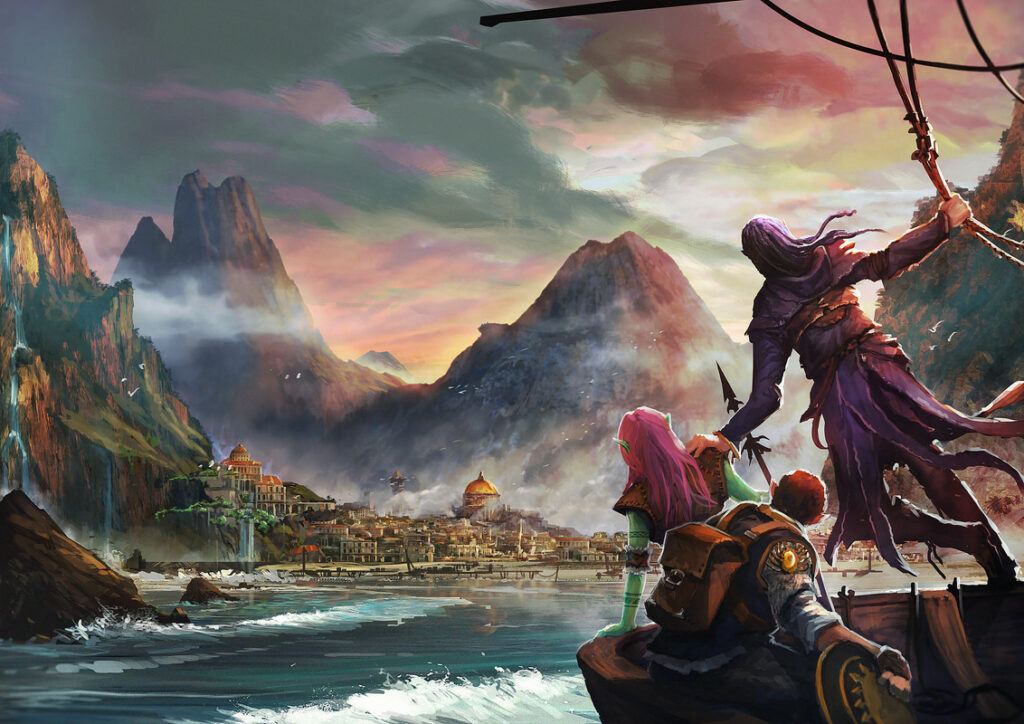
As for the outline of the campaign’s plot, in ancient times the Spring Court of the Feywild was cursed by the other season courts to slumber, and left behind buried in the material plane. However now a radical Teylu cult, the Teyhua, are seeking to awaken Spring and use its power to expel the settlers from the Archipelago. To do this a number of seals first need to be removed, which can each only be done by the Summer, Autumn, Winter and Spring knight (mortals in the employ of the courts as their champion, because they’re able to break Fey rules such as crossing running water and being able to lie), and the player characters find themselves entangled within this storied web and – mostly by accident – becoming knights for the fey courts.

I’m an avid worldbuilder, drawing heavily on historical minutiae, so in order to scratch that itch and build up a corpus of material I also write a “worldbuilder gazette” article every few months, dealing with info about the world that might not naturally pop up during sessions, such as how the different regional calendars work, lunar orbits, holidays, the economy, and nations the players haven’t visited yet. For every other worldbuilding-obsessed DM out there: I see you, I hear you.
How regularly do you play, and where do you play? Tell us about your current group of players.
The campaign is played online, using roll20 and Zoom, and we play about once every two to three weeks. With me included we’re a group of four from across the UK and west-central Europe. I’m gonna refrain from telling you too many personal details, but I’ll just say they’re some of the goshdarndamndest best RP’ers – nay, actors! – I’ve ever seen at any D&D table. They’re so insanely good. Sometimes I just shut up and listen for 30 minutes while they RP amongst themselves.
You put a lot of emphasis on the factions in your game, enough to place them on the front page. Can you tell us how important they are in your game?
As mentioned previously, I draw a great deal from history when worldbuilding, and if anything history is a revolving door of peoples, polities and cultures clashing with each other. The factions on the wiki’s home page are for the most part the main cultural groupings; what background an npc is from can inform a massive amount about their character, customs and perspective on things, especially how they relate to the local background conflict and what that means for their relationship with the player characters. I don’t want to have my game world populated by unattached caricatures, I want the npcs to have allegiances of their own – be they culture, country, ethnicity, etcetera. In my opinion they make characters richer and more vibrant, and give the players an additional set of approaches to relate to them (are they from a rival faction? Are they both foreigners away from home? Do they have certain proclivities or interests relating to their culture that might be used to sway them?)
I don’t want every country to be contained in its own cordoned-off little box either, like they’re in their own stasis bubble: People move! Countries do war, trade, diplomacy, propaganda, cultural exchanges, religious exchanges, espionage, migration and more! Interactions between the different factions are the building blocks of my world, and the quest design flows organically from that. Part of having a reusable setting is having background conflicts that continue to passively generate animosity that can be leveraged into new quests. In the season of strife campaign the main plot is almost entirely motivated and impacted by the background conflict of the indigenous Teylu being squeezed by the Elyzian settlers, and most quests and npcs are at the very least tangentially related to that. Most recently the players were sent on a little sidequest to solve a dispute on some Teylu islands where wealthy Elyzian settlers had built… well… the Hamptons, basically, and their mayor was secretly throwing meat into the bay to lure sharkfolk to the local Teylu water genasi village’s spiritual site to disrupt their traditional links to the land.
I’ve also been working with a couple of artists whom I have commissioned many times. One of them is designing the factions icons for me. Those icons are all unique and purpose-made for my setting, not just plucked from the web! The faction icons there are the ones that are currently done, but in the end there will be two to three times as many! I’ve currently got a plan in the works to start a project with these artists, in order to make an illustration of one or two “average joe”’s from each main culture, to create a kind of setting sourcebook and give an idea of what the regular person in the street of each nation would look like.
Your WIKI section is very detailed and quite comprehensive. Who is responsible for adding the information and organizing it? How much time do you spend updating it as the campaign progresses?

Your WIKI section is very detailed and quite comprehensive. Who is responsible for adding the information and organizing it? How much time do you spend updating it as the campaign progresses?
L’wiki, c’est moi. It’s all done by me and I’ll conservatively estimate “a metric ton of time”. It’s a good thing I enjoy wiki-building (I read aloud from my hostage note) and I’m a glutton for punishment if nothing else. My players do help me out every so often with writing sections of the summaries if I don’t have enough time to finish them, and one of my players performs vitally important recording wizardry, making video recordings of the session and uploading them to a private youtube playlist so we can watch them back and use them to make summaries. And she also makes thumbnails for each session! Recently we also redistributed some tasks so that another player would help me out with writing the short synopses.
Your campaign has many items and makes great use of Obsidian Portal’s Items section. How do you feel the extra work it takes to implement this benefits you and/or your players?
It’s always good to have a central place to store data as a master reference. Handing out item cards or putting them into word documents or reading out the item descriptions is all well and good but you can almost guarantee that stuff’s gonna get lost or misplaced at some point. Much better to have somewhere you can always refer back to. We also have a few items that have become real staples of the characters’ iconic look, such as the sword Spring’s Edge, one of the first items the group acquired in the first ten sessions, and it’s nice to be able to give these items an image to represent them.
What made you choose D&D 5e as your gaming system? Have you played other gaming systems, or earlier editions? How do you feel it compares?
I played 3.5th edition in the first campaign I joined (playing for a good 13-14 years) and DM’ed it for a while, and gods above and below in hindsight I found it so cumbersome and bloated, with hundreds of sourcebooks and a level of stat block number crunching I was simply never going to be able to get a proper grip on; After a while you get monsters on the field with modifiers of +20 to hit, and if you overshot the challenge rating you were supposed to give the players by a bit you could quickly end up with foes the characters could literally do barely more than single digit damage to. And worse, I disliked how lower level spells became exponentially useless as time wore on, because both the DCs and effects of those spells remained as low as a low level character casting them, encouraging you to only throw your highest level stuff. I could probably go on for a while but I’ll save the internet the byte space.
In comparison the 5th edition rules are easy enough to follow that I learned them simply through watching/listening to Critical Role, picking up most of the game (and learning answers to some of the baked-in rules conflicts or less commonly understood features) before ever even opening the Player’s Handbook. The familiarity I now have with the system appeals to me, the basics are pretty easy to follow, flexible enough to homebrew off of, and combat can be balanced quite decently on sheer ‘vibes’ alone, while fixing a lot of the annoyances I had with 3.5 (I don’t think any annoyed me more than being unable to move more than 5ft and make more than one melee attack, turning most battles into stationary ones because it was actively detrimental to move). The system is also robust enough that you can overshoot and make monsters too strong, without instantly signing the players’ death warrant.
How much time is usually spent preparing your game sessions? Describe a typical session.
Most sessions take me a couple hours of prep, often about equal or slightly less than total playtime… except when I need to build a battlemap in Roll20, which can eat up hours of my time while I finetune tiny details. Regardless, my prep can often be described as “leapfrogging.” Whenever I prep a session I will inevitably have enough material that we end up covering (nearly) two sessions with it. Plus if I need to buy time, I’ll just let the player characters talk to one another. Bam, there’s half an hour filled, easy peasy. In our very latest session the players started right after having been portalled to the gates of a Feywild city. They were right in front of the gates! It took 30 minutes before they even walked up to the guards! It’s a miracle we get anywhere at all.
Can you please explain the difference between your session summaries and your miniature session summaries? What is the difference between the two types of sessions?
Those both relate to the same sessions. The ‘session summaries’ are the long versions – which are probably a little too long at times, sometimes reaching more than 10 pages and rarely less than 4 – and the ‘miniature session summaries’ are brief synopses about one paragraph long. It’s a practice I picked up in the first campaign that I ran, where I noticed players had difficulty recalling the basic outline of the few sessions before it (especially because that campaign only played once every 6-7 weeks or so), so the mini summary contains a very basic outline of the main events/facts of the session, just so you can more easily search back for when something happened and so you can recall the basics at a single glance, rather than walls and walls of text. The mini summary section on our wiki then links to the long-form summary of that particular session.

I’m a bit of a fanatic about chronicling everything in massive detail because:
A) I’m a historian and work with archival departments at a government ministry. It’s kinda in my blood at this point.
B) The first campaign I ever joined as a player ran for like 12-13 years and we had basically zero documentation, so halfway through there were just complete year-long arcs of the campaign I had no recollection of or where I didn’t know the order of events anymore, so a lot of plot stuff inadvertently flew over our heads half the time because we didn’t remember anything.
C) I just can’t stop myself. Help.
How long have you been using Obsidian Portal? What brought you to the site and what keeps bringing you back?
I had an account before then but I’ve actively used Obsidian Portal since about 2018, when I first started DM’ing my own campaigns. There might be shinier things out there, with widgets and gadgets and holograms, but I like the easy legibility Obsidian Portal’s format provides if you wanna put up big blocks of text. With some pretty basic coding you can do a fair amount to make it look nice, formatting it like it’s a Wikipedia article. And of course being able to hyperlink back and forth between different pages makes navigating through the wiki a breeze.
If you had to pick just one thing, what would you say Obsidian Portal helps you with the most?
I put up stupid amounts of text, and like I said above I like the legibility Obsidian provides. As a history enthusiast my favored terrain is wikipedia pages (I get a +2 to hit modifier against other historians), so that’s the model I like to copy. I’m also happy with the pre-defined sections for characters, game logs and items, rather than needing to build custom wiki pages for each of them and it becoming a right old mess. If there’s anything else I might want to see from Obsidian Portal it’s one or two more sections like that, such as a bestiary section for common creatures/creature types found in your setting.
What would you say is the biggest highlight of your game so far?

Oh gosh, oh golly, oh jeepers, I had such a tough time answering this question!! We’ve played 74 sessions up to this point, and so many exciting things have happened! Should I pick the time the cleric held an impassioned speech before the church to denounce the bigoted high priestess? Or the victory in the Autumn Tournament when the rogue defeated the other candidates to become the new Autumn Knight? Perhaps I ought to pick that time the party were surrounded by enemies on all sides and opened up the Iron Flask they’d carried with them for nearly 30 sessions without knowing what was inside, summoning a succubus to their aid? That time the ranger/druid had a romantic ride across the meadows of the Feywild on the back of a stag with one of the main villains (he’s hot so it’s okay), or simply when two players were wasted drunk and trying to escape across the rooftops from some bandits, with the air genasi rogue floating away from danger like a balloon?
This artist has done a huge series of illustrations for our campaign, all of which can be found here
I guess if there is one moment I had to pick it would be in the earlier stages of the campaign when the players were at a fancy gala, and the rogue suddenly ran into the crime boss (and secret weretiger) on the dancefloor whom she’d been romancing at the start of the campaign before getting cold feet and breaking it off. I cannot describe the utter mic drop moment when that French accent suddenly returned and I showed off the art I had commissioned for the occasion:

As an aside I also want to add that for me the personal highlight of any game is when the ranger/druid communicates with any flora or fauna. I never know what voice will come out of my mouth but let’s just say the interactions don’t really live up to the wise, sage druid image. Pigeons hate her, seagulls have died for her, trees want to practice their stand-up comedy routines on her.
Okay, as a last question, we always ask for the GM’s “pearls of wisdom”. What GM insights can you offer the community this month?
I mean you’re gonna hear this one repeated ad nauseam, but communication really is key in playing a game like this. You gotta have some people at your table you can trust you can talk with like adults, make sure you’re on the same wavelength as to what kind of game you’d like to play, and make the players feel you’re playing with them not against them. Though as a DM I feel you should always reserve the right to not acquiesce to every single thing the players might ask for; sometimes mother knows best.
However, apart from slam-dunking that low-hanging fruit into Tantalus’ head, there’s a couple more things I’d like to add: First off, the success or failure of your campaign can lean very heavily on what the players are like, irrespective of your quality as a DM. There’s something Brennan Lee Mulligan said at a DM roundtable a couple years back that’s always stuck with me, namely “there’s nothing you can do if the players don’t care.” You can be the best DM in the world with the coolest party tricks and goblin voices but if there are sacks of potatoes sitting opposite your screen it’s gonna be a bad time (and I don’t mean people who are simply shy or withdrawn, I mean people actively unwilling to engage or care). And conversely if you’ve got some people who come to the table with a good attitude, are willing to engage and have a good time, you can elevate any game to beyond what it is on paper. I’ve had about half a dozen campaigns in my DMing career and I’ll earnestly admit some are running better than others (but on the whole I’m very happy with them all), but there’s one that thankfully bled to death where I was straight-up not having a fun time, because of a complete unwillingness from half of the table to engage, like they were forced to participate against their wishes. I didn’t DM that game any differently from my other campaigns, but it was a rotten experience while my other campaigns give me a surge of energy at the end of the night. You’re playing a collaborative game and that collaboration is what makes or breaks a campaign.
Secondly, being behind the DM screen gives you certain insights into how the game functions, and you can try to transfer some of that wisdom to your players to help them get better/get more out of the game. If you have players at your table who are DMs themselves you’ll often quickly notice they play a little bit differently that other players, and in my experience they tend to be a bit better with spotting plot hooks, unearthing crucial info buried in a piece of dialogue, and jumping on opportunities to give the scenario a different twist. With a little encouragement and advice I’ve seen the folks in one long-running campaign in particular transform from ‘enthusiastic amateurs’ into model players. If you wanna give your players any insights to help their play, I’ll offer you this one: “If you don’t do anything, nothing happens.” This applies to every aspect of the game. If you don’t respond (promptly) when the DM asks you about scheduling, the game doesn’t happen. If you don’t go talk to that npc who seems to hold a potential plot hook, then that quest doesn’t occur and you don’t do anything during the session. If the rest of the party is chasing the undead who just attacked the village and kidnapped someone but your character doesn’t want to leave their bed (this happened once), you won’t be able to do anything in the game for the next hour or more. If your character is getting distorted visions about their personal quest but is informed they first need to consume the waters of life to see them more clearly but you make no move to acquire said waters of life, nothing happens. If you never take the initiative to turn to your fellow players and go “hey I think we should plan a heist to steal the plot item”, then no fun shenanigans-filled heist happens. If you play the game super safely and cautiously, none of the fun stuff happens. D&D is an immensely malleable game, where your efforts as a player can and will shape the contours of what the session is gonna be like: Make your players aware they have that power and co-opt them into making the game more fun and to try and get them to engage with what you’re putting out for them.
Thirdly, based on my own campaigns so far and the ones I’ve participated in as a player I’ve picked up a way to structure my campaigns that I’m quite happy with, and that I’m using for the second Twilight campaign. If I could do Strife again from the start I’d have liked to use this approach there too. I like to start by taking my time with the lower levels – giving players enough time to fully explore all their spells and class features and ways to use them creatively, and making them appreciate their new abilities more when they finally get to level 5 and beyond – and giving them a pure sandbox game. They’re set loose in the world and allowed to do generic low-level quests: Root out the goblins blocking the local road, escort the archeologists to the nearby excavation site, find out who’s stealing from the warehouse, etcetera. They get the sense of fulfillment of completing quests (rather than just subsections of a long-running main plot), get to explore your world and setting, get to build a network of NPC contacts, and have complete freedom to pick and choose for themselves what to do. This also puts them at liberty to fail or abandon quests without the stakes being too high and introduces the players to the idea that “if you mess up, you make a mess”, because at a certain point in a high-level plot the party can’t really be allowed to fail that much anymore without endangering the entire setting… and DMs put a lot of work in their settings! They don’t wanna toss it out on a whim! So this early sandbox stage both gives the party freedom and gives the DM freedom not to have to plot-armor the party. In the Season of Strife the party spent their first ten sessions in the starter-town, Celestine, engaging with a local crime boss (slash love interest), and then hitching a ride on an archeological expedition to another part of the island for a while and doing a bit of dungeon delving, before they got involved in the bigger plotlines. You can also start throwing in subtle foreshadowing to the campaign’s eventual BBEG… A namedrop here and there, a whispered rumor, mysterious graffiti appearing in the cities, and so forth. After the sandbox stage you’ll start reaching levels 6, 7, 8 or so, which in my opinion is the game’s sweetspot. This is the part where the format becomes more plot-driven, your players may encounter recurring villains (possibly lieutenants to the campaign’s BBEG), and the stakes start increasing. Perhaps this stage results in a kind of mid-campaign climax. A big victory for the players to revel in at the end of the second act. Maybe you’ll even return them to the sandbox stage for a while to do sidequests or loose ends, before the plot and stakes start dramatically ramping up again as the BBEG starts coming to the fore and you get to the big, epic, dramatic battles as you work your way to the final confrontation. Players generally don’t like losing more than once (in a row), so my recommendation is to always split up your plot into separate portions which can be won piecemeal.Also, get theater kids to join your game. They are good at roleplay and drama. It’s… it’s in the name.
Thank you to the community for making this campaign of the month possible! That’s all for now, join us on our next adventure May 1st, and don’t forget to nominate your favorite campaigns for our next Campaign of the Month!
Obsidian Portal Campaign of the Month January 2024: More Things in Heaven and Earth

Get ready to jump into the mystical techno-magical future of North America after “the Awakening”. The year is 2082. The place is “The Emerald City”, where people are willing to risk it all and walk on the bleeding edge, making deals with anything. The GM is Dropbeartots. The runners are a rag-tag group of humans, an elf, an ork and a troll. They adventure in a Sixth World Shadowrun game called More Things in Heaven and Earth.
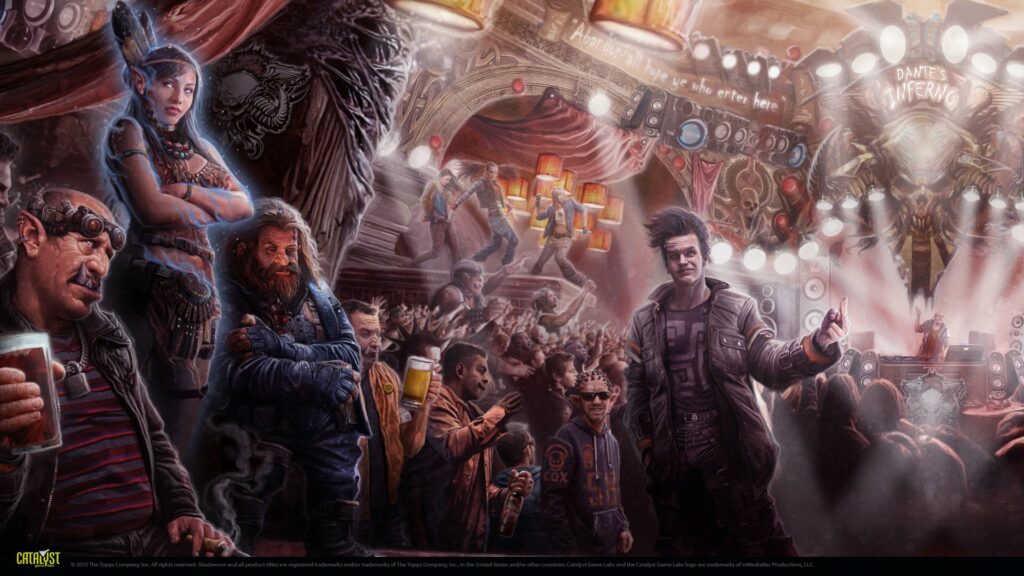
First off, feel free to tell us about the person behind the GM screen. Where are you from? What do you do aside from gaming? Alter Egos? Life partners? Family? Where can we interact with you on the internet?
I’m just an Immortal elf hanging around waiting to see the Awakening happen still! My alter-ego is a dropbear, of course. My folks were military, so I really didn’t settle down anywhere for very long until my Dad retired. Since then, Ive been in Texas. Aside from gaming, I work a lot and try to make enough money to keep up with Shadowrun’s new releases and increase my collection of older edition books. Two of the gamers in my group are related to me: Ringpop is my wife, and Nomad is my youngest son. My internet activity has decreased quite a bit in the past few years, but I have a neglected site on WordPress called When Dropbears Attack! I really should get back into it…

You are running a Shadowrun Sixth World Game. Are you familiar with the previous editions and if so, can you mention any differences, or talk about the evolution of the Game? What are the things you most enjoy about the Shadowrun world in general?
Shadowrun has been the single game that’s really carried my interest across all editions. I’ve been the forever GM with it since first edition came out! The most captivating thing for me about it has been the evolution of the story of the Sixth World across the decades, and the back cover blurb of the first edition core rulebook just grabbed me more than any other game ever has. It has always been a game about three worlds – Man, Magic & Machine – that kept me engrossed the most as a reader, player, and game master. I keep coming back to it time and again even when I get distracted with my interests in a wide variety of other games. When most people can point to D&D as their definitive TTRPG starting point, I can honestly say that yeah I started with it but I never really loved gaming as much as when Shadowrun was first plopped down in front of me.
Sixth World, for me, has a plethora of good points. In the first five editions, the skill lists were pretty extensive. As a skill-based game, on the surface this always seemed appropriate. But this often seemed to me to cause characters to have a lot of spread-out skills distributed at a low level just to cover all of their bases. With Sixth World, the skill list has been very condensed, and I have found that a lot of my long-time players are happier with building characters.
Another good point to me is the Edge system. As a sort of advantage mini-game, it has encouraged a lot of thought by the players into roleplaying seeking out various environmental and situational advantages
in their exchanges, both in combat and social encounters. I will admit to it being a lot of work to keeping up, but I think if used and taken advantage of, the system offers a lot to players.
Mechanically at its heart, SR has always been a d6 based dice pool system. Since 4th edition, the target of rolling has changed from a sliding scale Target Number that varied wildly to 5 or 6 being a “hit” and the more hits you collect the better off you are at whatever you want to be doing. I think that’s great, as it puts less mathematical work into the rolling part of the game. Although I personally never had a problem with doing the math (and never had any issues with THACO, either!), more people seem to be into less math with their math rocks, so it meets that desire well.
I‘m well aware of a lot of the editorial and mechanical issues with Sixth World. I think the recently released corrected Seattle and Berlin city editions of the core rulebook have done a fantastic job of correcting a lot of errata and injected pieces that were missing with the original core rulebook. Also, the Sixth World Companion offers up a lot of optional rules to flavor your game to taste. Overall, I find Sixth World to be superior in every way to the previous 5th edition of Shadowrun.
As I’m sure most fans of Shadowrun will agree, the biggest draw to the game for me is the game world itself. From the 2050s to the 2080s, the game‘s writers have built up a backdrop of shadowy intrigue, corporate espionage and betrayal, magical wonders, ancient mysteries working their way into a postmodern cyberpunk world, and moved that world through some strange, weird, off-the-wall and sometimes downright head-scratching moments. In the end, it’s largely what you make of it at the table as a group though. And I personally have the most fun with it over all other games.
As far as my thoughts on the most complete, most well-written, and well-tested edition of Shadowrun? I would have to say I’m mixed on that. I find both 3rd and 4th edition to be the ones that grabbed me the hardest of all. I’d put Mike Mulvihill, Rob Boyle, and Adam Jury on my list of those who produced my overall favorite stuff for Shadowrun. Why don’t I stick with those editions instead, you might ask? Hrm, have you seen the prices people are asking for some of those out-of-print books? Can you say “collector gouging”? 😉
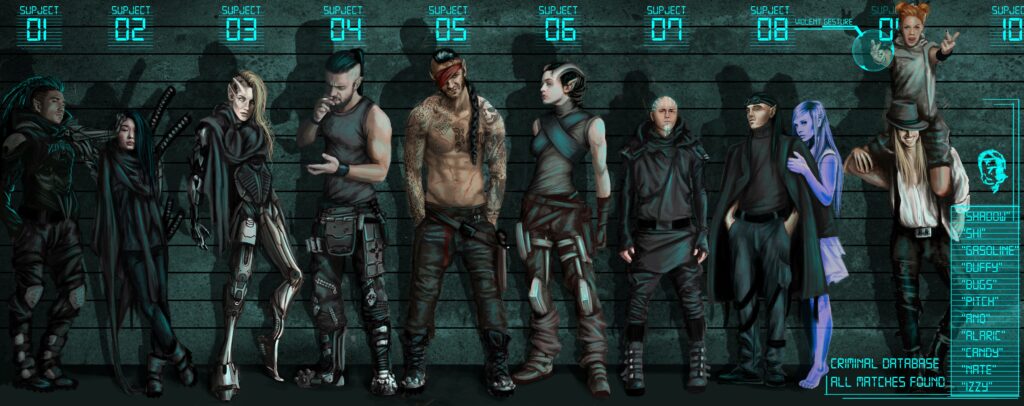
How did your group meet up? How often do you play? What are your sessions like?
I have known Bowynn, Krysa’s player and Kwaba, Robot Jones’ player, for an exceedingly long time, I think it’s going on thirty years now. We’ve played SR since Third Edition. It seems like I have known Nomad’s player all of his life 😉 It’s sorta my fault he got into gaming, after all. Twitch and Little Doll’s players, I met through my wife. She met them on the Amtguard field, and introduced them to me and we tried out gaming with D&D for a while, then i finally had to start them playing Shadowrun. I seduced my wife into the dark side of Shadowrun shortly after we met, and I think that she fell in love with the game just as much as she did with me, lol.
We have been playing weekly together for a while now, with game night settling on Tuesdays. My wife and I have been travelling a lot for her job as an RN, so there’s been a lot of play through voice calls on Messenger for a while. Since I recently settled into a new job a few months ago, I’ve been more localized to our house and our in-person gaming has resumed.
Our sessions can usually be boiled down to one word, lol. Chaotic! If you know, you know…
You have a very innovative Navigation System on your site. What inspired you? How did you go about setting it up? What advice can you give for new GMs on Obsidian Portal who want to do the same?
Really, I have to give a lot of props to the site’s design here. It gives the opportunity for Ascendent
members to edit, add, remove, and modify the navbar to their heart’s content if they wish. And I speak only for myself here, but it is a GREAT feature that I was super enthusiastic about when it came up.
I was particularly intrigued by the way you extended your Experience Point Awards to cover three different sections – Heat, Reputation and Karma. I know you also had this on your previous award-winning site, “Wildside”, but what inspired this, and in what way does it help you and your players?
Karma is the real “experience point” value among the three here, although all three are earned by characters in Shadowrun through play. Reputation is how well-known a character becomes among other groups of the world by their actions in-game – its not always positive, either! And Heat measures how much characters have screwed up and both how well-known among and how wanted by the authorities a Shadowrunner has become. The lower the better there 😉
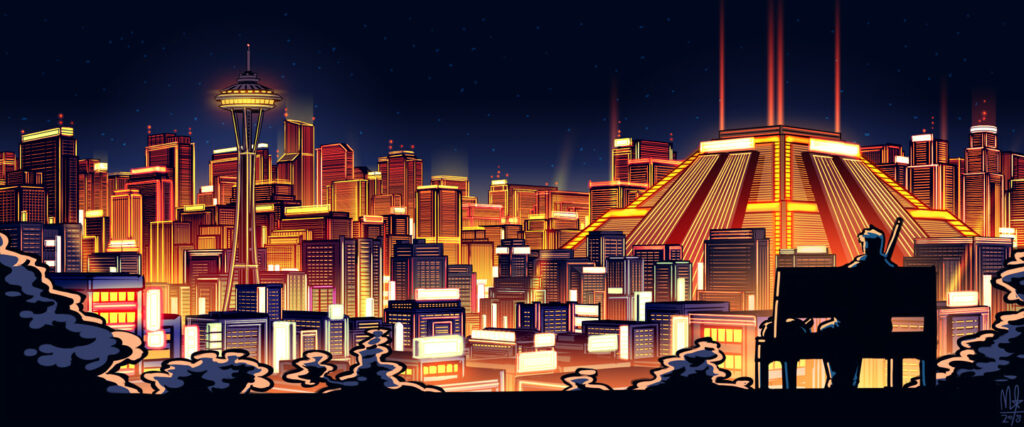
Your “Critters” section is very cool. Which ones have been the most memorable in your game so far? And DO tell us more about the “Drop Bear”…
A lot of the threats a character will run into are human in Shadowrun, but there are other… things out there as well. In Shadowrun, these critters are normal animals that have changed somewhat due to the influx of magical energy into the Sixth World over the seventy-some-odd years of the alternate history. I wanted to build a section for my players to be able to see some of these things and reference rumor of their various capabilities. Most of the time, I add to the critter section before one is potentially encountered.
Well, the Drop Bear is kind of exactly what is described in the Critters section. An awakened koala with very sharp teeth and claws that fall off of trees to drop on their unsuspecting prey – which often tend to be humans! The group has managed to find one of these critters well outside of its native habitat that was subjected to a variety of experimentation in a corporate lab. Ringpop, the resident animal lover, has ended up sort of adopting it and is trying hard to tame it and teach it tricks. She named it Tater Tot. She gets a lot of static from the rest of group because of that…
How involved are your players in the site? Who tends to do what? Do your players add their own Adventure Logs?
The player of Little Doll, the group’s social butterfly and face, tends to post the bigger updates on the Adventure Logs from her character’s perspective about all of the goings-on. When other players are able, they have added to the Adventure Logs as well.
I tend to use the site as a whole as a reference and tracker for our game, and the Adventure Logs to post contacts reaching out to various members of the group to set up jobs, or to frame events that occur in the world that are outside of the characters’ spheres of influence but might affect them in some way.

How long have you been using Obsidian Portal? What brought you to the site and what keeps bringing you back?
I have been using OP since 2009. I had been looking for a campaign journal site, and I really enjoyed the features OP offered a lot. What keeps me there is the fact that they are so devoted to continually improving the experience of use and site utility, and the community built up around the site that is so supportive among the users.
If you had to pick just one thing, what would you say Obsidian Portal helps you with the most?
I would say that Obsidian Portal is awesome for giving me the means to keep my campaigns’ details
organized, cataloged, and documented. And it allows me to customize so much of the way I would like to do that.
What would you say is the biggest highlight of your game so far (please also provide images and links if possible)?
Little Doll and Nomad say that Tater Tot (https://morethingsinheavenandearth.obsidianportal.com/characters/drop-bear) is the highlight of the game 😀
Ringpop says it was the time her character got stuck in Dante’s Inferno and was singled out by Dion (https://morethingsinheavenandearth.obsidianportal.com/characters/dion), the lead singer of Thursus (https://morethingsinheavenandearth.obsidianportal.com/characters/thursos), for romantic overtures only to find out that he is actually a dragon! She ran so fast… Ringpop does not like dragons at all, they make her very nervous and she already has a difficult time in social environments.

Okay, as a last question, we always ask for the GM’s “pearls of wisdom”. What GM insights can you offer the community this month?
In Shadowrun especially, if you can set up paranoia, do it! Use what the players tell you about their perceptions of what’s going on to feed the flames. Don’t always confirm what they say, but do confirm enough to make them feel what they are thinking is right before you introduce a twist and pull their rugs out from under them.
Always keep pressure on the characters, keep them hungry, use external organizations to push them and show them the sharks swimming alongside them, and give them enough rope to hang themselves.
Be sure to reward them well when they pull off something ingenious, give their characters’ actions, relationships, and personal motivations weight, and make them matter in the world at large.
And last, but, not least, if they decide to take on an MCT Zero-Zone, go hard. Make them work.

Thank you to the community for making this campaign of the month possible! That’s all for now, join us on our next adventure February 1st, and don’t forget to nominate your favorite campaigns for our next Campaign of the Month!
Obsidian Portal Campaign of the Month October 2023: Thieves & Kings
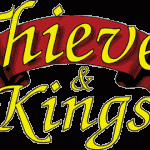
Well met and welcome to Argoth, the land of Thieves & Kings — our October Campaign of the Month winner! GM Robling is no stranger to our crown of conquerors, and adds to his accolades with some of the best world-building and writing you’ll read this side of the City of Bright Sails. Thieves & Kings has been many years in the making and promises to take adventurers from humble inns to fey courts to powerful portals into the realms beyond understanding. Warm your worn hands by the common room fire and listen to our tale…

What’s new in your life since your Campaign of the Month win in 2014 for “Battletech (Farscape): The New Breed”?
Practically nothing, though, fundamentally, COVID changed all our lives, neh?
“Thieves & Kings” has many chapters and hundreds of gaming sessions spanning seven years of real time. We know it would be impossible to sum up everything, but could you give us an overview of the story, so far?
Overview, hmmmm. It started with six players, each representing a character, who had been fostered for their youth to various clans across the realm of Shem, being informed their adopted father had died and left them his farm. They gathered and discussed matters, and were immediately involved in an assassination, and fled the town of Hexwater a few steps in front of the local law. Over the next few months, they established themselves in the region of Thornkeep, and discovered the local mystery around a troll invasion, the local fey creatures, and mistakenly (?) began hunting a former fey hag as their chief enemy. As the years progressed, they began to acquire divine powers and discovered that their former enemy “Blackmaw” wasn’t so bad, really, and that she was fighting someone who was far worse, “The Great Hunger”, her former lover. At present, the survivors have decided they wish to embrace these offers of divine power, and are sorting-out how to achieve true divinity as a Demi-God. But their enemy, The Great Hunger and his followers, know them and work to unravel their plans as they unravel his.
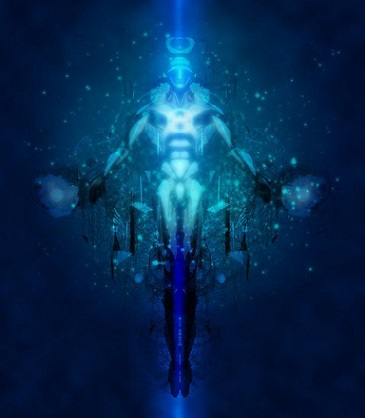
The continent of Argoth and the world of Kethira as a whole is extensively catalogued in your wiki — it’s a veritable library of information that has been built up since your school days. And the character section is absolutely full of people and stories. What were your favorite bits to write and what parts of the site do you find most useful?
It’s extensive because of the years of effort both I and my players have placed into it. The efforts of today’s campaign reflect in the campaigns to come, and that forms a very wide amount of information that never makes the WIKI or Portal files, but exists, nonetheless. The ability of the Obsidian Portal website allows a wide disbursement of information, including bios, stats and even connects them to items and other characters, because each has their own story to tell and share. I’ve found if you approach each NPC as a real person, and treat their reactions as real and honest from *their* point-of-view, it enriches the encounters with the players, and then influences future encounters.
At the end of the wiki for “Thieves & Kings” there is a section on customized rules for the campaign — many adapted from various supplements and systems and modified to fit your needs. The Rulership and Thieves’ Guild Operation rules were especially interesting. How have these worked out for you and your players during the game?
I established each for the players to read and decide which version they wished to implement for various campaign management operations. Most were discarded, as the group slipped away from large-scale management of armies and realms, and decided to concentrate on small, close-knit organizations of their own, dealing with dozens of people, rather than hundreds. The “Thieves’ Guild” operations remain important, as one of the players has worked to establish their control over the underworld of Mornhaven, and allows us to abstract that aspect of the game enough to concentrate more on the role-play and combat. Which was kinda the point of them, really.
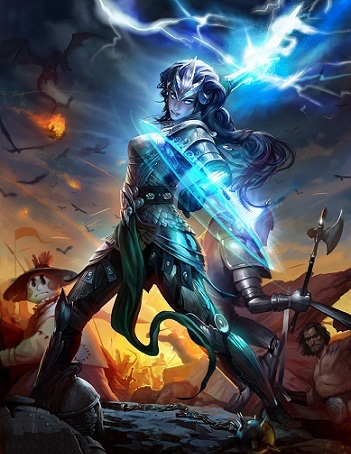
According to your Obsidian Portal bio, you have tried out many game systems and have a lot of experience with a variety of settings and game mechanics. From your perspective, what are the advantages and disadvantages of 5th Edition D&D compared to other games? Was shifting Argoth from other editions into 5th Ed. a challenge? Are there any plans to convert it into other systems in the future, if needed?
The advantage of 5th edition, I feel, is that it remains very robust in sliding back and forth between combat and role-playing, and allows exploration to be easily adapted to the encounters. If you compare it to early editions, it allows a great deal of mobility and movement to combat, which allows players to shine, rather than simply two characters beating on each other, whittling away HP as they go (*Cough Cough* 2nd Edition *Cough*). Pathfinder is nice, but too dependent on Prestige classes and Feats determining each encounter, whereas 5th Ed allows simpler math and makes the combat flow swiftly. I don’t think we’ll be transitioning into D&D One anytime soon, if ever, and the recent “home rules” introduced by Larian Studios “Baldur’s Gate 3” are intriguing and show how simple rules changes can make a difference in playstyle and encounters, and bears scrutiny.
The Adventure Logs for “Thieves & Kings” feature a clever format — a quotation, an inspiring image, and a video link to help set the mood. Are these atmospheric touches selected prior to a game session or afterward? Do you find that reinforcing the moods or themes during gameplay to be important or is it better to let the players create their own impressions?
I have found my players don’t typically pay much attention to them, until suddenly in the middle of an encounter they remember the title of the episode, or the picture, or the video, and it all falls into place in their minds. That’s the point of it, really, to hint a little and to provide some real physicality at a key part of the episode. Sometimes, however, they ignore it completely, and go out into left field, and the title proves irrelevant, as they choose to follow a new line of investigation from what they said they wanted to at the end of the last session. But that’s okay, because, ultimately the Players have the power, and choose where they want to go and what they want to accomplish. I simply provide options.
As to mood, I’ve found sometimes that you can lead the players to the encounter,and set the mood, but if they’re not into it, they won’t care. Sometimes they just want to chew gum and fight, and they forgot their gum.

What have been your favorite moments in the campaign, so far?
The sudden realization that one of the main characters, Blackmaw, wasn’t really so bad after all. She’s unabashedly NE, but they have accepted her as an ally, because she doesn’t see them as rivals, and sometimes they prove to be useful pawns to play. Her reveal of her love for her monstrous children to the party was especially precious, and one of the players said it was the highlight of the campaign to her. “Blackmaw” is my favorite NPC of all time.
Also the moment they were confronted with the knowledge there were actually seven children raised by their father, and they had another “sister”. At that point, they realized that the place they had been investigating was called “The Hall of Seven”; and they realized a truth they had known for months, but never clued into. Later, she swindled them to acquire a magical artifact with them, and during that reveal, they realized they’d been utterly taken advantage of, and never trusted anyone for a long time afterwards. They really didn’t like or trust her for a long time, though now they are openly working with her. “Skazzy” is a favored NPC this campaign.
Without giving too much away, what hints can you give us about the plans (if there are any) for the conclusion of the tales of “Thieves & Kings”? Or is this the kind of adventure that might go on for as long as possible?
The players know the ultimate goal of the campaign is to achieve demi-godhood, and the defeat of The Great Hunger. Only a couple of levels away from that, they understand their goal, and know that their characters are going to become demigods in the campaigns to come, so they have a vested interest in achieving this goal. Back when they gained their first “Divine Level”, they established the path of their cult, and its worship, and now it’s all about following-up with this to achieve their proclaimed status. We just started talking about what the next campaign might be…

During your first interview with Obsidian Portal for your prior Campaign of the Month win, you wisely advised GM’s to avoid being adversarial and to “Be the storyteller, and make the players the focus of the campaign.” In the years between then and now, what other insights have you gleaned regarding the craft of game-mastering, writing, and world-building?
Don’t plan too much. While I run an open-world campaign format, and for the most part, the players are quite willing to stay close to home. They really have so much to explore closeby, that they don’t *need* to travel much. Just have a couple of adventures handy that you know well and can adapt on the fly, and apply, whenever the players decide to “go rogue”. And they will go rogue on you in an open-world format. Otherwise keep plenty of notes so you can allow them to explore the world around them, and forge their own destiny. If you have notes from previous campaigns handy, they can travel over lands from previous campaigns, and realize what their previous characters have done, and how much effect their actions have at the moment and reaching into the future.
If you want the Players to travel, provide them with the means; Teleport Circles and Flying Boats (Spelljammer), or even just normal boats, allow them to travel extensively and explore across the worlds you design, and let them explore other genres of gaming, such as Oriental Adventures, Fallen Empire ruins and even isolated rocks in space at need, and give them a tie to the campaign world that they will treasure and love. In this campaign, they adore their flying ship, the “Emerald Angel”, improved their ability to get across the map quickly, rather than slogging across mountains for weeks, they can travel across the planet in days, or reach the markets at Mornhevan in a couple hours, rather than a couple days, making them able to concentrate on the task at hand, rather than the means to get there.
Otherwise, my campaign advice remains the same, keep it open-world, keep copious notes, and let the Players explore themselves as they explore your world, and they will develop the stories you will replay and talk about for decades.
Thus concludes our tale of Thieves & Kings, for now. Our thanks to Robling and his Players, once again, for sharing their creative might. Go forth now, fellow adventurers, with this edict: find us more worthy campaigns upon which to cast our eyes, so that our circle of judges may bring you fresh insights and inspirations. Bring your treasured discoveries to the forums, here.
Obsidian Portal Campaign of the Month September 2023: Arcanearth
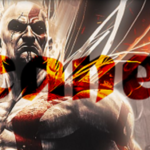
Do you enjoy Dark Fantasy? You will love this month’s CotM- Arcanearth! Great evil and selfless good, Magic, Angels and Fallen Angels. Religions play a big part of the world as well! This D&D 5E game has seen epic battles against ancient Dragons, Overlords, and giant frogs! The world itself has seen Ages of Angels, Dragons, Magic, Ice, and Rebirth! Come explore this rich world created by Omegabase and crew!
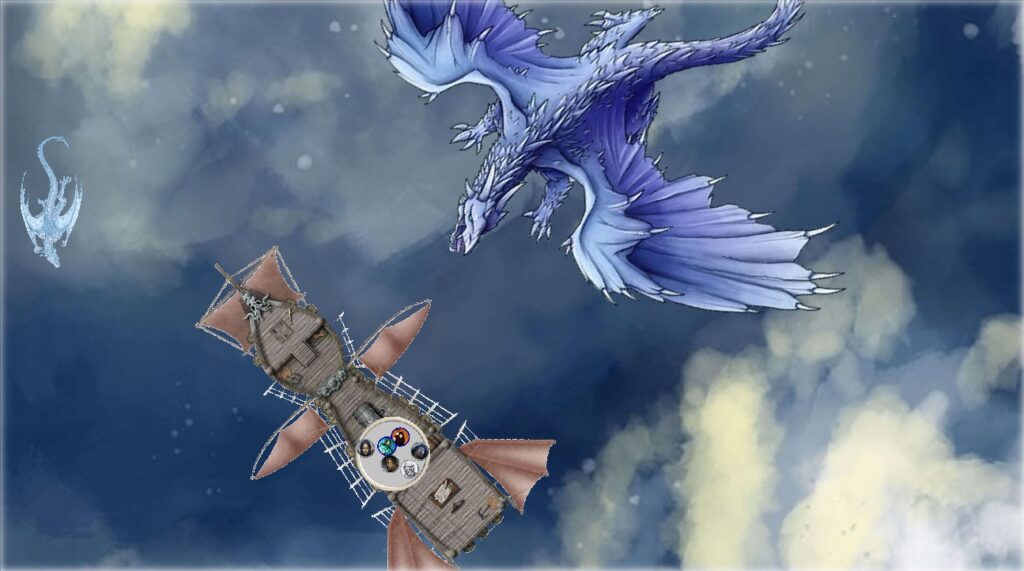
1. Tell us about the person behind the GM screen. Where are you from? Where can we stalk you on the internet? What do you do aside from gaming?
Not much of a social media presence beyond OP. Live and work out of Austin texas. Father of 2 earning a living from IT consulting.
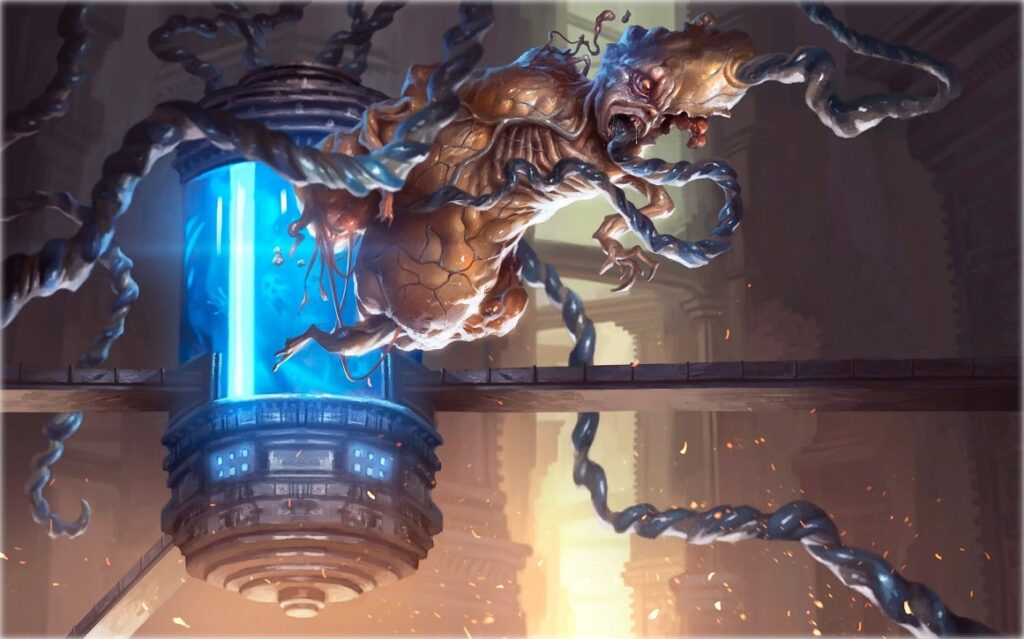
2. You made your home page your main artery to get information on your campaign- Why did you pick that approach? It is quite unique.
Didn’t see the need for another menu, convenient to have most info one click away.

3. You run D&D 5E- What do you like about it? Are there any things you dislike about it?
In most ways it’s the best edition of d&d. I did tone down the ‘easy mode’ aspect by eliminating hit dice for healing on short rests, limited healing on long rests, and allowing only one death save. This certainly contributed to the only 2 pc fatalities. Probably would use a different system next time around, like PF2, or integrate rules from other systems, like PF2. Also might consider an OSR system like the forthcoming Shadowdark.
4. You added Rogue Modrons as a race- what do you like about them, and how important are they to your campaign?
This came about from a short mini campaign where the players took a break from their main characters and assumed the personas of favorite henchman. These sessions don’t appear as separate logs but are mentioned in session 74 when one of the henchmen, who subsequently became a PC for a new player, revisited a key location from the mini campaign.
The player of Hoxton chose a modron he liberated from the plane of mechanus in session 63. Rogue modron seemed the obvious choice as this player has a thing for bots…played the robot Strelok in the last half of the gamma world campaign.
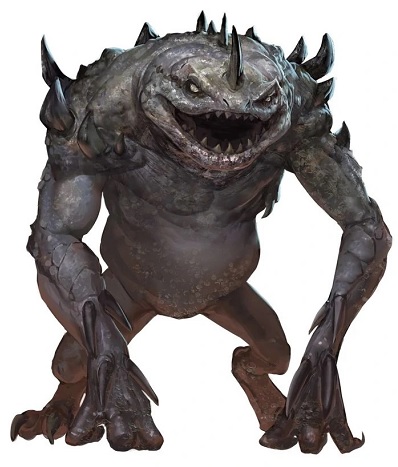
5. You have a very detailed world origin story, as well as a focus on angels and religion, for your game. How important are these to your characters?
Settings as such generally don’t have much utility to players and that holds true here as well. However the setting is indispensable to integrating the pc’s into the world events and related adventures when running an epic scale world-shaking superhero campaign such as this one. Ultimately the players will appreciate being part of a living world and adventures thereof.
6. How regularly do you play?
On hiatus currently, 2-3 sessions monthly when playing. Sessions average 3-4 hours in length.
7. How long has your group played together? How long have you been running Arcanearth?
Most of this group has played together since the 80’s. Most also played the last 50 or so sessions of gamma world 2754. Arcanearth started dec 2017. One player has the distinction of appearing in almost the entirety of both gw2754 and arcanearth (Grek/Strelok/Finch/Hoxton).
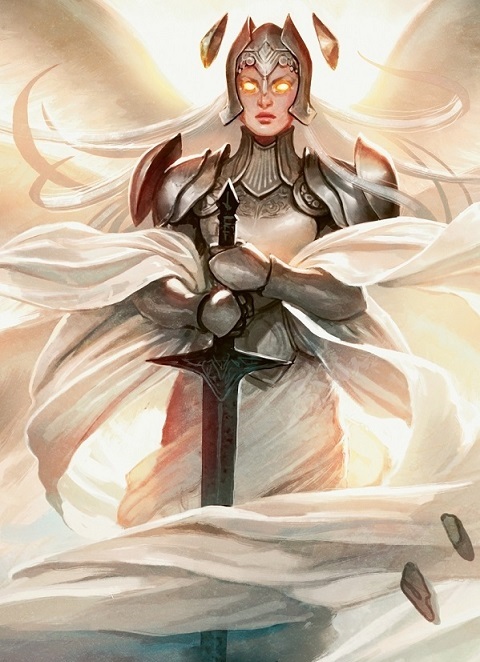
8. You won CotM all the way back in 2016 for Gamma World 2754- what keeps you coming back to Obsidian Portal?
Familiarity and lack of any worthwhile alternative. It’s a great place to organize and document your rpg campaign. A friend is starting a shadowrun 4e game soon, maybe we’ll throw that up on OP as well.
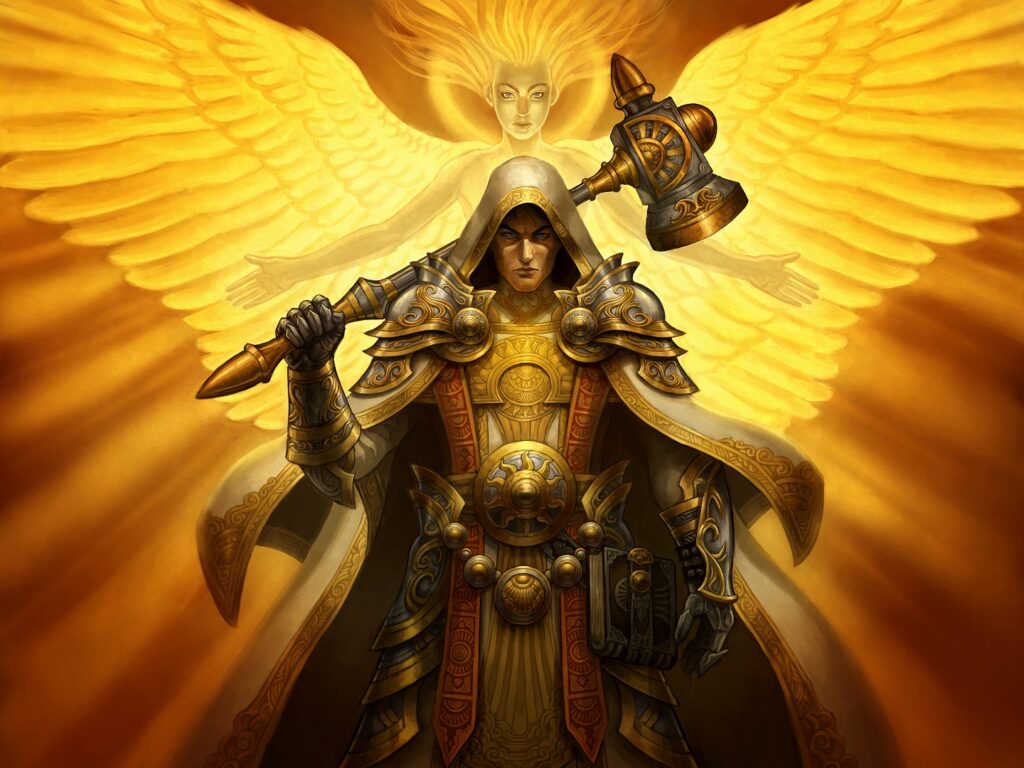
9. If you had to pick just one thing, what would you say Obsidian Portal helps you with the most? Do your players get involved on the wiki too?
PCs use OP for character sheets and backstories. The searchable database helps a lot for finding old npcs and events from past sessions. The character pages are the single most useful feature for both players and GMs.
10. Where do you draw inspiration from when preparing your game?
This setting is from fall from heaven 2, a total conversion mod for civilization 4. The epic scope of the macro game is inspired by the FFH2 setting and the fantasy works of Michael Moorcock. On the micro scale, you may discern the influence of Jack Vance. See the sessions about a certain ‘Green Pearl’.
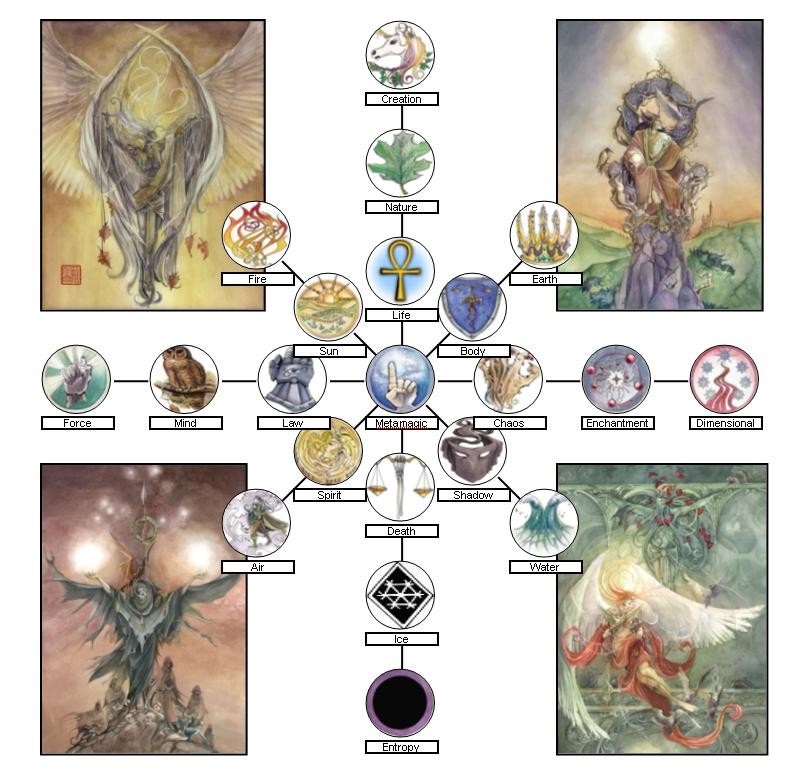
11. How much time do you usually take to prepare for a session?
On average across all sessions, not counting the original world wiki creation, probably as much time to prepare as to play (3.5 hours). The wiki and world building, hundreds of hours over the course of years.
12. What would you say has been the best moment your table has had thus far in your game?
For me, the green pearl sequence. For the pcs, possibly the waking of the sleeping god Danalin and defeat of the Overlords, or more recently, the close battle with the ancient red dragon Acheron.
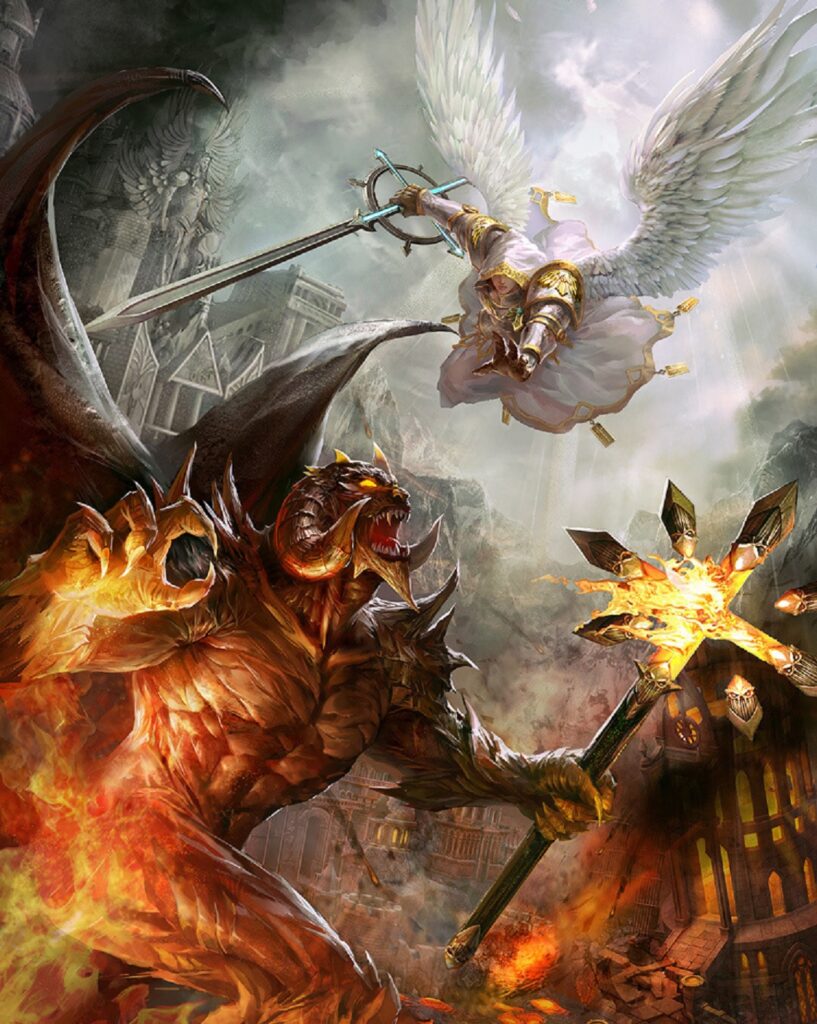
13. Okay, before we get out of here, give us some of your best GMing pearls of wisdom.
Don’t be afraid to feature a few challenges where it is uncertain or even unlikely the pcs can win outright. Have an out if/when they lose, that leads to more interesting possibilities rather than simply a TPK. Epic foes filled with hubris typically want more from pcs than merely their deaths. Such as their services, use as bargaining chips, information, entertainment, conversion to the cause, experimentation, torture, or simply groveling submission. All of which provide ample scope for a dramatic comeback. Players (and GMs!) enjoy nothing more than hard-won triumph snatched from the jaws of defeat.
Victor
“Age just a number, one and one and one. We stronger than number. Next year I’ll be younger”
Li Na
Thank you to the community for making this campaign of the month possible! That’s all for now, join us on our next adventure October 1st, and don’t forget to nominate your favorite campaigns for our next Campaign of the Month!
Obsidian Portal Campaign of the Month July 2023: Esomor Prime
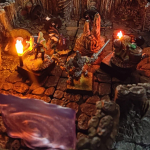
Enter the intriguing realms of Esomor Prime, a 5th edition D&D campaign set in the homebrew world of Sam. Here we find a world dominated by 13 powerful noble houses, who rule over dozens of factions and hundreds of lesser houses. In this world Sam runs SIX separate groups, totalling TWENTY FIVE players, all in different regions of the world, for now…

Tell us a little about the people behind the logs? What’s your group like, how did you all start playing together, and what drew you to your current system?
The groups are all friends of mine through various corners of my life, and I use one Obsidian Portal site for all of them. My original group has been playing D&D since 1995 and we were brought together back then by our mutual friend and first DM, Roy. I eventually took over as the full time DM of that group and have never relinquished the reins. The other groups started trickling in over the last 5 years, and include a “brewers group” a “work group”, a “circle of friends new to the game group”, and “friends from college group”, and an “online only group” for those out of town.
How often do you play and how do you generally do so?
The online group is constantly going in a “play by post” format. For live sessions I usually DM every two weeks but with so many groups, they only get to play every two months. Sometimes I am booked solid 4 months out!
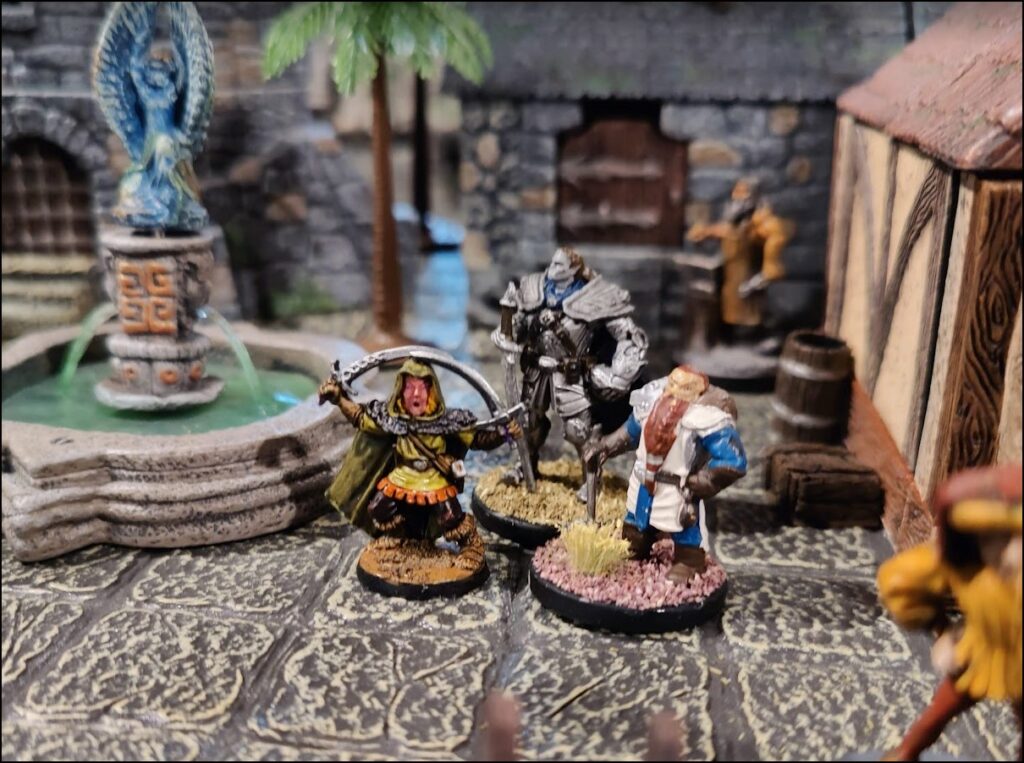
What’s the primary inspiration for your game? What themes do you and your players like to explore or situations you dream would come about?
For this current campaign I am running, I wanted a Game of Thrones like setting with lots of political intrigue with strong noble houses and powerful factions and huge world-changing story arcs. My “oldest” group is 8th level and my newest is 2nd, so some of them are just now starting to see the beginning of the “big picture”. I do have a dream of assembling an All-Star game with one player from each group and them all coming together to form an epic, end-of-campaign, world saving task.
You have a mighty list of Player Characters, what complications does that add for you and your players?
Obsidian Portal makes it so easy for all of my players to sort by their own campaign, but there is so much crossover information at their fingertips that each group can indirectly learn from each other group. Not sure who this NPC was? Look them up on the website! Maybe another group has run into them before and you can learn even more about them!
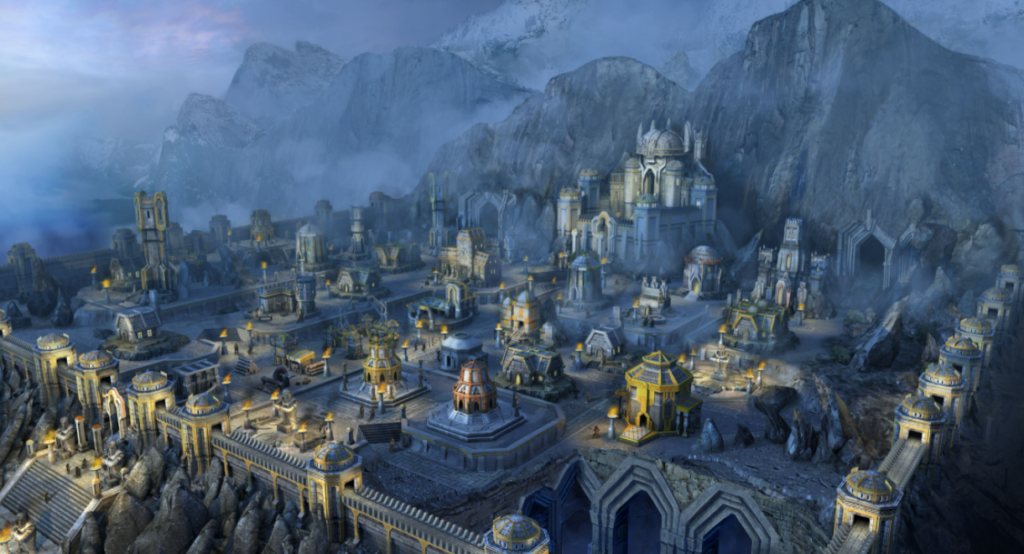
How long did you spend developing the style of your site, and did you have any help?
This huge campaign has been a dream of mine for a long time and I have been tinkering with the idea for years. For the longest time I would just make notes on what style of campaign I wanted to run and eventually this homebrew world started to take shape. As a previous campaign world was coming to an end, I launched this one to transition into. Lately, ChatGPT has really helped streamline the process for some of the minor details.
I love your inclusion of art/memes in the adventure logs, do you create them by yourself, or do share that responsibility?
The Bing Image creator through DALL-E has been a huge help, such a time saver!
As you’ve been on Obsidian Portal for a while, what is your favorite feature for helping to manage your campaign?
Obsidian Portal is so easy to use! It looks great, links are easy to create, and it is a breeze to import images. Plus having one single wiki page for the “Order of Bones” faction that is seen across all groups is a HUGE time saver.

Back to your game, what would you say has been the best moment your table has had thus far in your campaign?
Each group has had some amazing moments, but one of my favorites was my “Bronzewood Valley” group following up on a random minor encounter I left for them where they found a broken compass on a trail. They thoroughly investigated who left it, where it was purchased, and was able to track and save the lost explorer. Through a long series of other events, this led them to working with that adventurer to establish their very own town in the mountains, all from this random broken compass!
Let’s round this out with one of our favorite questions for our featured GMs! If you had a secret sauce for running a great game, what would be the most important ingredients?
Have fun! Sometimes I worry if I have enough prepared for a session, or do I have enough handouts, will the battles be challenging, but once the session gets rolling just go with it and remember why everyone has taken time out of their day to play, so have fun!
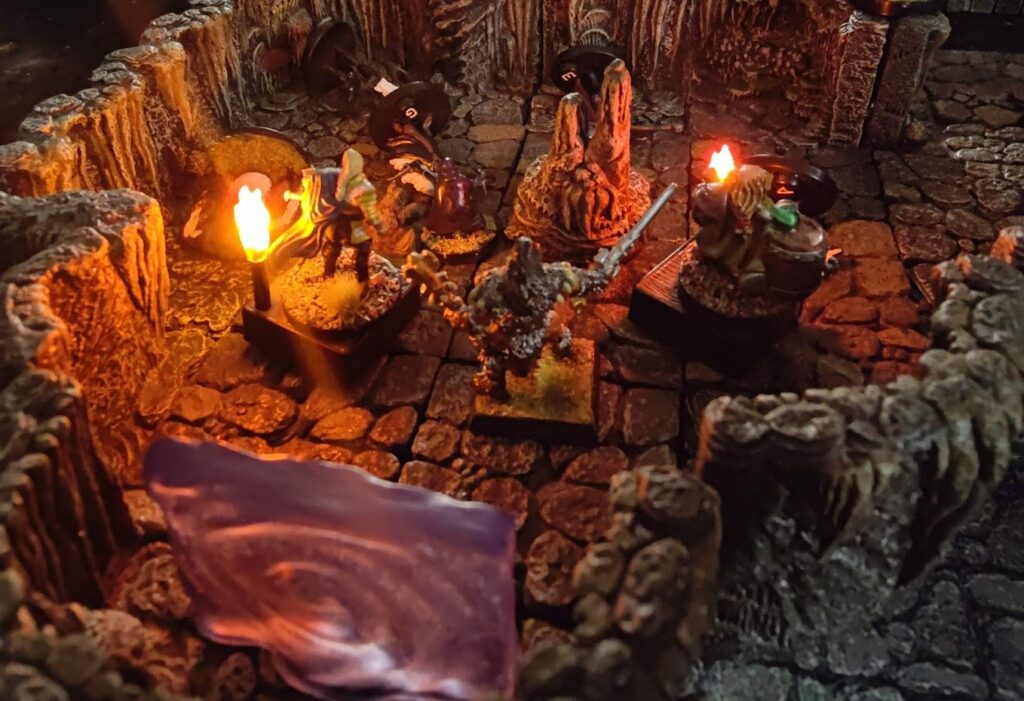
That’s all for this month folks! Don’t forget to head on over the the OP forums to nominate your favorite campaigns for our next Campaign of the Month!
Obsidian Portal Campaign of the Month May 2023: Motes in the Serpent’s Eye
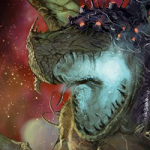
In space… no one can hear you Psychic Scream. But they can feel it! Half dragons in combat armor and bio-anthropologist plant-creature druids find themselves embroiled in galactic politics for May’s winning Campaign of the Month: “Motes in the Serpent’s Eye.” Captained by The_CDM, a GM who has sailed the cosmos of space-time to engineer a fantastic combination of multiple systems and settings, there’s plenty of Veteran-level knowledge to impart on how to run a successful, multi-season game. Come join the experienced crew of the Royal Exploratory Service’s Cygnus Class long-range science vessel, the Speaks Softly, as they seek the origins of life, the universe, and everything.

Hail, The_CDM and congratulations on winning Campaign of the Month! We know from your Obsidian Portal profile that you have been gaming for many years and have been a long-time member of OP. How did you get started in the world of rpg’s and what keeps you involved after all this time?
For me, I suppose it all really began with Chain Mail, which led inevitably to that darn blue box of original DnD basic. A couple of friends and I discovered them in grade school and that was it – we were hooked. Far beyond the dull and regimented board games of the late 70s, we discovered a medium to express our imaginations and develop a sense of deep friendship and camaraderie while doing it. I don’t think I’m being trite when I say it was eye-opening and mind-expanding. Over the years, my gaming groups and I have explored the realms of Traveller, Space Opera (from FGU), Call of Cthulhu, Villains & Vigilantes, Hero System and many, many others. But always we return to that touchstone, some form of DnD.
What keeps me, personally, involved in the hobby nearly fifty (omg that long now?) years later is both complicated and very very basic. Friendship. Camaraderie. The joy of collaborative story telling. Shared experiences, both good and bad. Many of the players and friends that I began this journey with are still with me to this day and to paraphrase one, “Some of my favorite memories are of things that never happened, places that never existed, and folk that only reside in my head.”
From TheTokenShadow, who plays the soul-mech, RC-880 “Durendal”.
Hail, CotM! I am TheTokenShadow (name flub when creating my account and I just stuck with it). I have been playing D&D since 1989 and met this current group in late 2011.
From Zentropyse, who plays the half-dragon, Lord Serpentce:
A long time ago (1982) in a land far away a friend got this new game called D&D he wanted to play. It was a blast! Months later another friend who ran a game I played in introduced me into a group he played with at college. I’ve played with this group ever since because our GM/DM rocks and whatever he’s running is always amazing and fun!
From AcReiBuruCGe, who plays the half-dragon, Pei’Fa:
I play Lord Pei’fa half blue dragon/Drow, who presents as a Mandalorian/Jedi murder machine, who is a truly good time, stabbing bad guys with parts from other bad guys, or sharing a story with the over-entitled nobility at a draconic imperial ball.
I’m called Doc, and I got started in D&D in high school, right before I joined the service. I started because I realized I could utilize the game to practice problem solving skills, and it turned out to help me to not only survive, in some situations, but excel in my career. My friends call me that due to being a combat veteran who was a Fleet Marine Force (FMF) Navy Corpsman (medical). I have PTSD as well as a full list of physical problems from my military service. I added to this list of problems on, many occasions with many activities, including not sleeping well for 23 yrs and living in my car with 2 cats for a bit. I now work at the local Veteran’s Hospital as a Yogi trained by Hindu and Tibetan monks, and last month celebrated 22 yrs of service, at the hospital, not including my 10 yrs in uniform. (Our gaming group is old. Average age around late 50’s. The core group has been together for over 35 years)
My duties now include working on the wards of Acute psychiatry, Dementia, Rehab medicine, long-term Spinal Injury (residents, who live in the hospital), and Blind rehab. I’m also the Aquatic conditioning instructor for our amputee and TBI (traumatic brain injury) patients who are Para-Olympic athletes.The reason for the “wordy” introduction is to answer the second part of the question. The reason for me to continue gaming is very simple…the gaming group I’m in. We often hear/read about gaming groups calling themselves “family”. The group that makes up this gaggle of “Homicidal Indigents” or “HI”, as we affectionately refer to ourselves on occasion, have been the best support system I could have been blessed with. They were there for me when I was a complete idiot, didn’t deserve any slack, or was simply broken for awhile…over and over. My ability to become a yogi, or even simply do my job, is due to these people. Generous and loving even when they would’ve loved to punch me, these folks had my back when I didn’t or wouldn’t. Our DM told me that he was glad to see that the healer inside me was stronger than the warrior, as his congratulations speech for getting out of the military. As far as I’m concerned, these are the best reasons to continue gaming, even if it’s only 2-3 times a year.
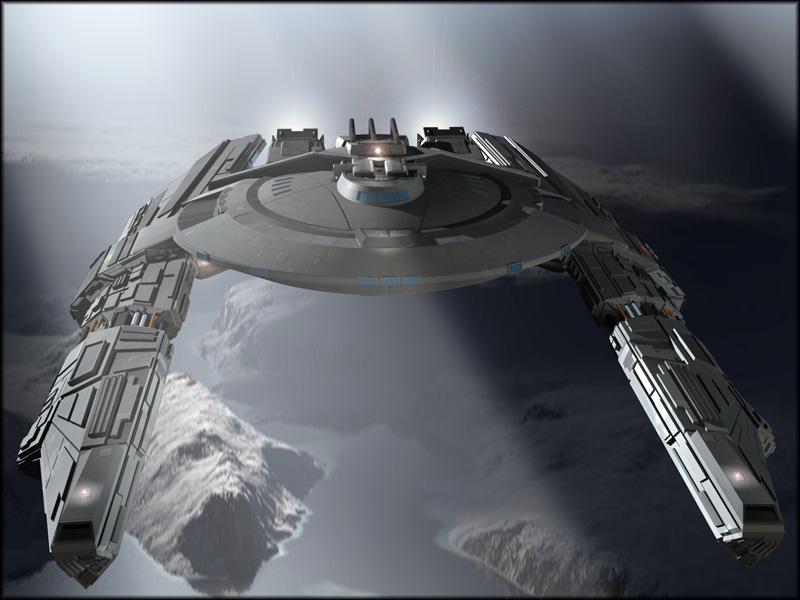
Your winning campaign, “Motes in the Serpent’s Eye” has been running for about six years, split into multiple seasons. Can you give us a brief summary of the main story-lines, so far?
Brief, huh? The main, hidden story engine that drives the campaign has to be Dr. Eon Rose’s research. She’s trying to prove that all sentient species in the setting are not only related, but ultimately are derived or descended from some unknown origin species. Publishing her hypothesis set off a long chain of events that have led to the story-lines we are exploring in Motes. Other ‘main’ story-lines include: the integration of the remaining ‘original’ crew of the Speaks Softly with the ‘new’ crew members, overcoming mistrust, resentment and personal bias to become a team and family that truly cares about one another; the behind-the-scenes machinations of the powers that be in the Dragon Empire, who is involved in promoting and funding this mission? What stakes do they have in it’s success or failure? Why is this mission important?; Encountering new cultures and people and finding ways to interact with them with wisdom (and sometimes violence); Exploring themes that could be taken from our own world, such as the abuse of power, strength through inclusivity and compassion, and of course politics – with a few Kobayashi Maru scenarios mixed in – for instance, the Safe Haven story is proving to be the group’s crucible of fire at the moment.
To create “Motes” you and your friends had to combine core elements of the D&D space opera Dragonstar with Savage Worlds, as well as some supplements and modifications. What kinds of challenges caused the biggest headaches during this process? How did you solve those issues?
Biggest headaches? Emulating that DnD mechanics feel with Savage Worlds was the most gigantic. Especially the magic system. Without it, Dragonstar was just not the same flavor. Originally we tried a version of this campaign using DnD 3.0 – a complete disaster that resulted in an unintentional TPK (a failed piloting roll in an asteroid field combined with me not realizing just how much damage can be generated by such). Savage Worlds presented an opportunity to try it again with superior mechanics, but capturing that vancian magic from the original rules really proved to be a challenge. Stumbling across Rich Woolcock’s work (Savage Vancian Magic) really made it viable. Since then, the new SWADE updates and their exceptional new Fantasy Companion has helped immensely. Savage Worlds modularity makes much easier to describe and emulate new spells, creatures, items, etc. DnD in it’s various incarnations provide players with hundreds upon hundreds of spells and items. At first glance, Savage Worlds, with its fifty-plus powers seems sparse by comparison, but use of trappings, limitations and power modifiers are essential to creating a cornucopia of magic options. We are obviously still evolving the rule set as we continue the campaign, but are pretty happy with what we’ve got going on now. Other headaches were codifying the monstrous amount of gear available in the original Dragonstar setting books. That is still an ongoing process, but I deal with it on a case by case basis. Player: Hey I saw this in the DS books? Can I get one? What are its SW stats? That and the continuing debate between the coin counters and the simple wealth mechanic factions in the group – but that’s a relatively minor headache.
Zentropyse writes:
It’s a work in progress, the tech/magic balance is hard to master- in my mind you’ve got technology which can almost be magical but it is really just absolutely mundane- all of it. Then there’s magic which is magical but in a head to head comparison plays second fiddle to the powered armor, big guns and missiles, IMO. Having a spell battery with spells like Power Down, Control High Tech Devices as well as custom spells like Arcane Cyberjack and Electromagic Pulse helps immensely.
AcReiBuruCGe writes:
a) Play testing
b) Play testing
The mix of high-technology, fantasy, and magic was really intriguing in this setting and it appears to have blended very well into every aspect of the game. Have you or your players discovered any clever combinations that stood out? Any cool items or special spells that saved the day?
Serpence using a Ring of Invisibility and the spell Arcane Cyberjack to take over a pirate gun emplacement in ep 18.
The enchanted gatling ice laser (tripod mount) used by Doctor Keystone to repel pirates from the Speaks.
And while it didn’t save the day, I thought that the intro for episode one, describing the player’s approach to Mount Rimidil Skyhook Station and it’s techno-magical space elevator was quite cool.
Dr Nodagil saving a bunch of the crew from certain death after an explosion on the bridge. Everyone who had been present was bleeding out. The good doctor used his cloak of teleportation to get to the bridge immediately and his Healing with the Mass Healing power modifier to save the entire bridge crew.
Giants shooting down the ship’s shuttle with arrows, giant ones, of course, during Rumble in the Jungle.
Zentropyse writes:
I have been waiting for the perfect moment for the combination of Dampsuit (creates silence) Shattergloves of Ambidexterous Speed (the base Shattergloves- a short range sonic disruptor outlawed by many planetary governments) and Brilliant Energy Touch spell to debut. It will be glorious! If I don’t flub the roll…
AcReiBuruCGe writes:
My character has a glamoured t-shirt, that doesn’t “save” the day, but adds a little ray of sunshine. As he tends to present himself as a fun-loving moron, he will often casually walk towards enemies letting them see various sayings crossing the fabric.
“Your demise isn’t required for my meal to start”
“If I’m not wearing your insides on my outsides, it’s an off day”
“Open your mind and say ‘Ah'”
“I’m not egotistical… I don’t think I’m half as good as I really am”
That sort of magic item is precious to a character hampered with the conceit hindrance.

In the Encyclopedia Obscurum within your wiki, we noticed you even incorporated some X-Crawl, the gladiator-style arena battle game (and a personal favorite). How did this element feature in the campaign?
Primarily as background noise and role play fuel. First of all, X-Crawl is cool as heck. Second, if you had a five thousand year old, galaxy spanning, fantasy race inhabited, civilization hanging around, do you think the favorite imperial sport would be softball? No, they’d revel in the ‘good old days’ of idealized dungeon-delving heroes, romanticized and polished up for broadcast across the empire. Monetized and replete with player-endorsements, and over-priced team tabards for sale! Every scaly backside that’s sat upon the Imperial Throne knows the value of bread and circuses – keep the masses appeased and they will never revolt. Motes players have created their own teams and celebrities (many of them based on old DnD characters) and posted them on the campaign wiki. One player (who plays Lord Pei’fa) graciously runs an occasional side game that is just X-Crawl events in the Imperial League. They are, of course, bloody and gratuitous.
AcReiBuruCGe writes:
I tend to be the one who latched on to the X-Crawls concept. I have written a couple of Imperial Sports Presentation Network (ISPN) news segments. We also have referenced characters from previous games being current superstars in the professional league. There is also a semi-pro, college, and amateur leagues (pros and college are the only ones with full resurrection, post-game contracts).
You seem to be blessed with an abundance of players and have experience running for larger gaming groups. How did you find each other and do you have any advice for maintaining and organizing big parties?
Most of these chuckleheads that I call my dear friends have been hanging around in my life for forty years or more – proving their questionable judgment. Some go back all the way to high school where were understandably the oddballs of the student body. Gaming came naturally and was a less expensive and more dynamic pastime option for us back then. We all ran a game or two, but it seemed either I had a talent for it or was masochistic enough to become the primary game master for the group. One particular friend ran a Villains & Vigilantes game that actually focused on continuing stories rather than the battle of the day, which inspired me as a game master. Members of our gaming group came and went and came back, brought friends, partners, and the curious to participate.
My advice for maintaining and organizing big parties? Patience. Communication. Keeping a campaign alive and focused with 8-12 adults all with real lives requires high levels of the cat-herding skill. Thus tools like Obsidian Portal are essential for scheduling games, keeping players up-to-date, and session recording. Use the Forum feature in OP to give players and GM a place to post in-character interactions and information tidbits in between sessions. The Secrets feature is another amazing tool – every character and NPC has at least one or two on the site. As PCs explore and investigate, they are able through this device to discover hidden stories about their fellow crew mates. As adults getting all of us together regularly can be a serious challenge, but small interactions, secrets and even character short stories posted for all to see can keep the momentum and interest going for those ‘dry’ gaming periods when no one’s schedules mesh. Lastly, if you’re going to be foolish enough to running a game with an average of a dozen players – find a simpler gaming system. DnD will always have a warm place in my heart, but that many players, especially once they get high level, can turn a ten round combat into an 8 hour session. Savage Worlds was our solution to that dilemma. It also makes generating challenging opponents on the fly MUCH easier on the GM. Because when do players do what you expect?
Zentropyse writes:
Obviously we are all cursed, fated to band together and bear that burden though all eternity with aplomb and resolve knowing the game doesn’t serve us, we serve the game.
AcReiBuruCGe writes:
I was introduced to the group by one of the current group. He asked if I could be allowed an audience game, due to being a wordsmith smartass with a dark sense of humor. I’ve been his and the DM’s “special project” ever since.
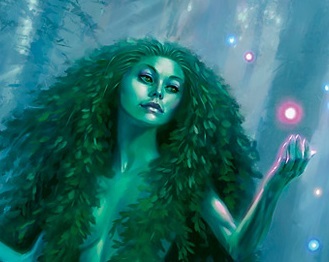
Do you or your players have any memorable moments, epic showdowns, or favorite quotes that were highlights during the campaign?
One of my favorites took place during the crew’s attempt to capture the pirate ship Happy Insanity. The players used an EMP grenade to disable the bridge defenses – only to ultimately cause that vessel’s demise by disabling the control systems in a key moment. They beat the pirates but lost the ship.
TheTokenShadow writes:
One of the things I enjoy most is the collaborative aspect of our campaign. We have a number of really good writers in the group and some of our best material is spontaneously created when we riff off each other’s experiences.
For example, there was an in-character conversation between the characters Bishop and Rwvyan regarding their secret benefactors.
They had the discussion on the forums and it was generally assumed to be a private interaction over the ship’s comms. I decided to add a bit of chaos and chime in:
Durendal leans over and casually presses the commlink.
“Bishop, you’re on the open channel again…”
It about killed the CDM, he was laughing so hard. Rwvyan’s player rolled with it in good natured fashion however:
“You hear muffled cursing from an unidentified person, and then the line goes dead…”
Ultimately the CDM decided it was an in-person discussion between the characters, rather than over comms, but it’s still an interaction we reference and chuckle over, 4 years later
AcReiBuruCGe writes:
a) Having the requirement of dragon conceit, all of my character’s moments are memorable and all his experiences are highlights as shining examples for others… so I have two.
The first is when my character needed a little exercise and dropped a T-Rex in 3 rounds with his lightsaber through its head. He rode said head to the ground, ala Legolas, and casually stepped off the corpse to announce “Tada!”
That’s when he saw the rest of the away team fighting demon dryders. Everyone was too busy to notice his performance, so he tore into the demons for stealing his moment.
The second is when my character grabbed 4 corpses with telekinesis and used them as shields dancing towards their bad-guy friends. 24 bad guys and 2 hover vehicles ran away just because my character was grinning at them the whole time.
b) My favorite quotes tend to be on my t-shirt.
From laser-lit combat while boarding spaceships to galactic political intrigue ruled by royal dragon houses, there’s a little bit of everything in this massive setting. What aspects of a fantasy space opera story have resonated best with you and your players?
The Dragon Empire is supported on the Twin Pillars of Magic and Technology. What science can’t overcome, magic picks up the slack – for instance – FTL. The laws of science can’t break the speed of light. But a high-powered teleport spell ignores that limitation. Mighty magic is wielded by individuals with specialized discipline or talent, but any old Joe with a week or two of training can climb into power armor and ravage their enemies with laser rifles. The mix and contention between these forces make for intriguing dynamics and some strange dichotomies in the setting. Why bother developing a deep understanding of the healing sciences when you can call a cleric? Prayers don’t need to understand cellular mitosis to fix a broken leg or cleanse toxins from the blood. Same with Starcasting (FTL travel). Science couldn’t solve the FTL puzzle, but magic did handily – but modern commerce and interstellar travel wouldn’t exist without technology – the automated manufacture of which can outstrip the output of an entire school of mages. With hundreds of thousands of worlds under the sway of the Dragon Empire, it is simple to find any flavor of adventure you care to run – from a dungeon-crawl exploring a ‘primative’ world in the outlands to Shadow Run-like stories in the back allies of the Throne Worlds. Its the sheer cornucopia of rpg experiences that are available all in one setting that really resonates with me. Finally, the concept of soulmechs I found fascinating. Science can’t create true AI in this setting, and while magic can appear to with creations like golems, they are either merely sophisticated automatons or controlled by bound spirits. Leave it to gnomes to find a way around that combines both magic and tech. Summoning the spirit of a deceased individual and binding it to a mechanical body is both inspired and pure nightmare fuel.
Zentropyse writes:
For this particular setting, having a Half-Dragon character in a Galactic Empire ruled by Dragons, who are supposed to be arrogant, full of avarice and conceited means my character is an unrepentant jerk that even other Half-Dragons, or as my character relishes in pointing out, other Half-Mammals can barely stand, much less any of the lesser races. That’s fun to play to see how far I can push it before he actually gets thrown out a space lock.
AcReiBuruCGe writes:
I work for the federal government and often refer to it as the Imperium. As a player in this setting, I’m just here for the fights, not the politics.
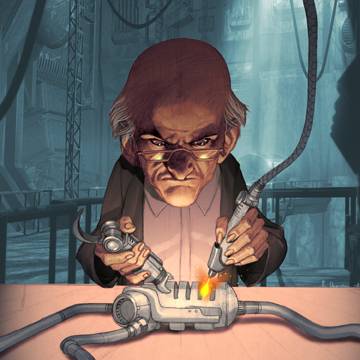
Without giving too much away, what hints can you give us about the future of this futuristic plot? Is there a Season Four somewhere on the event horizon?
Oh, very much so. The seasons were originally implemented as a way of separating both story arcs and times when we needed a break due to busy real-world lives. Season three will culminate in the finale of the Safe Haven story-line with some very telling reveals and surprises in store for the crew of the Speaks Softly. Assuming they survive and prove victorious over the little pirate kingdom, expect to meet more characters from the Royal Exploratory Service and perhaps some changes in the crew itself might occur.
Season Four, well, that’s going to focus on the Duchess Reythliivmaar and House Esmer’s involvement in the politics and intrigue surrounding the Speak Softly’s mission. Her minion, Lord Di’Shio, Eater of All, has not been idle since the episode six teaser… We will also get some glimpses of some of the other players in the machinations that plague our heroic crew. There’s enough material to keep us all going for several more seasons at least.
Zentropyse writes:
The Dragon Emperor Mezzenbone will be dethroned and suffer the shame of having had the throne and lost it, and my character will have played some small part in that but it’ll probably be somewhere around Season 37.
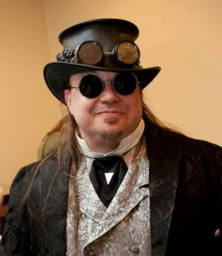
As always, Obsidian Portal loves to ask experienced GM’s if they have any tips, tricks, or words of wisdom when it comes to delivering fun gaming experiences.
Always remember, the story you are telling is not exclusively yours – it belongs and is being crafted by you and all the players who are joining in the game. Railroading is good only for one-shots and short, focused campaigns, don’t hesitate to embrace the plot twists and kinks that players create with their decisions. Don’t expect to predict their actions – they will always surprise you should you become complacent.
Know your NPCs and plots. Everyone has a story or secret – it doesn’t have to be more than a single sentence about their motivations, but it is essential that you understand them even if your players do not. Let the gears of the evolving story unfolding reveal and alter your plans.
Don’t try to build the entire world(s). Understand the portions that the players currently inhabit and the interaction between these places & people and other parts of the world. This makes you more nimble when your group does something unexpected. Don’t be afraid to improvise on the fly.
Listen to your players. Especially when they are trying to figure out what’s going on in part of the story. Often they’ll come up with a speculation that is a hundred times better than what you came up. Be the Environmental Interface, not the Author.
Take LOTS of notes – they don’t have to be particularly meticulous, or verbose, but jotting down little mnemonics for yourself during sessions/discussions/brain storm meetings gives you a plethora of dangling plot strings and ideas to tie into adventures and help you remember that, for instance, Bishop-1 was once a family man and still has flesh-and-blood relatives out there somewhere. Writing something down helps fix it in your memory for later use.
Give everyone a chance in the spotlight. Tougher with bigger groups, but worth the work.
Never let the players see you sweat. Even when they do something you never saw coming that completely upends your plans for the adventure. Smile knowingly, make a few notes, roll some dice and improvise as if you had planned on that very decision.
Well, the sound of incoming laser-fire and proximity klaxons means it’s time for us to wrap things up. We hope these cosmic insights have helped inspire you to re-tool your own systems and settings to make something really stupendous, like “Motes.” Special thanks to The_CDM and the Players for an excellent interview! Keep a robotic eye out for future Campaigns of the Month here on the blog, and be sure to visit the OP forums if you’d like to nominate a campaign for consideration (even your own).


